#VALLESPIR
Explore tagged Tumblr posts
Text



Picking coscolls (Molopospermum peloponnesiacum).
This plant grows in rocky spots in mountains in Europe above 1500 m above sea level, such as the Pyrenees and the Alps. In the Pyrenees, people pick them to make salads. This plant is a bit like mushrooms, many people go to pick them but they won't tell you where they have their spot.
The coscolls are picked during May and early June, before the flowers open. Then, they have to be peeled, taking away the little branches and the exterior layer, because the edible part is the stem. They are cut in short pieces, two cuts in the shape of a cross, and left to soak in water.
Their taste is very fresh and crunchy. In this time of the year, they are the protagonist of different salad recipes in the Pyrenees mountains of Catalonia and Northern Catalonia.
Photos: Fabian Heussler on Encyclopedia Of Life, El blog de Cal Lliuret (restaurant a Travesseres) and Les Loueurs du Vallespir.
#menjar#coscolls#catalunya nord#catalunya#vallespir#cerdanya#food#foraging#pyrenees#pays catalan#foragecore#vegetables#foodie#gastronomy#cuisine#salad#cultures#culture
30 notes
·
View notes
Text
Troisième Rencontre Sans Frontières des municipalités catalanes
Le samedi 5 octobre 2024 dernier, Tuïr (Thuir) a accueilli la troisième Trobada sense Fronteres (rencontre sans frontières). L’événement est organisé depuis 10 mois par l’association culturelle autogérée et autofinancée des Angelets de la Terra, qui travaille depuis 25 ans à tisser de nouveaux liens entre la Catalogne Nord, la Catalogne Sud et tous les Pays Catalans. L’objectif principal de ces…
#Angelets de la Terra#Capcir#catalogne nord#Catalogne Sud#Conflent#Journal Catalan#Le Journal Catalan#Pays Catalans#population#Pyrénées-Orientales#rencontre sans frontières#Trobada sense Fronteres#Vallespir
0 notes
Text

Mapa del nord de Catalunya, amb Andorra i parts d'Occitània.
#mapa#cartografia#Catalunya#Catalunya del Nord#Fenolleda#Fenolledes#Fenolledès#Rosselló#Vallespir#Aspres#Conflent#Capcir#Cerdanya#Andorra#Urgellet#Alt Urgell#Urgell Sobirà#Empordà#Garrotxa#Ripollès#Berguedà Sobirà#Costa Vermella#Pirineus catalans#Marenda
1 note
·
View note
Text
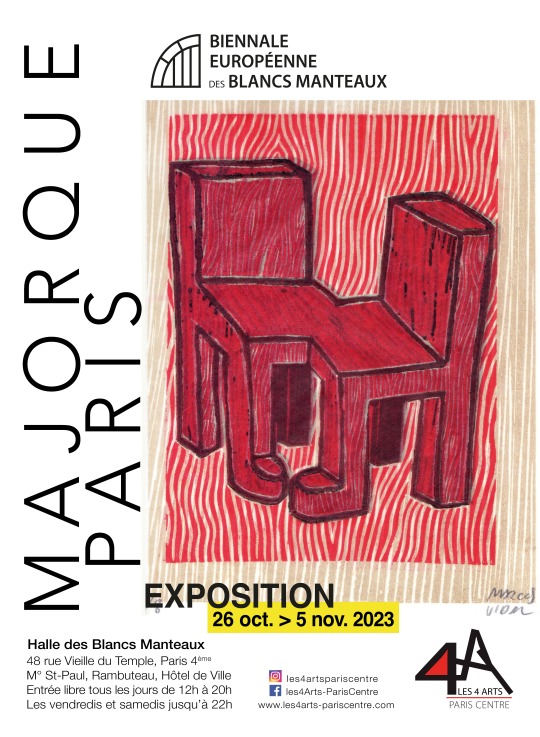
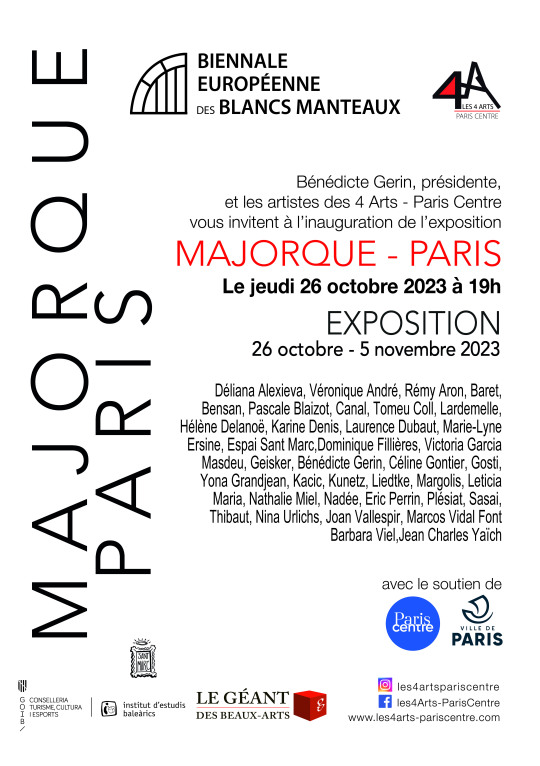
La Biennale Européenne des Blancs Manteaux 2023, tendrá lugar en la emblemática zona de Le Marais de París, con la participación de 40 artistas, 6 de ellos de Mallorca; Sasai, Joan Vallespir, Leticia Maria, Victoria G. Masdeu, Tomeu Coll y Marcos Vidal implicados en el intercambio originado por Les 4 Arts – Paris Centre, que tuvo lugar en Campos en 2022. Estais todos invitados a esta gran muestra de pinturas, esculturas, obra grafica, instalaciones y performances que permanecera abierta desde el 26 de octubre hasta el 5 de noviembre de 2023. Con el patrocinio del Institut d'Estudis Balearics.
La Biennale Européenne des Blancs Manteaux 2023, c’est près de 40 artistes exposés à l’initiative des 4 Arts – Paris Centre qui œuvre depuis près de 30 ans à la promotion de la diversité culturelle européenne. Cette édition met à l’honneur les artistes de Majorque, avec qui un échange a eu lieu en 2022 dans la ville de Campos. L’exposition aura lieu du 26 octobre au 5 novembre 2023. Inauguration le 26 à 19h. Halle des Blancs Manteaux, 48 rue Vieille du Temple, 75004 Paris. Métro Saint-Paul, Rambuteau, Hôtel de Ville.
The Biennale Européenne des Blancs Manteaux 2023, will take place in the iconic area of Le Marais in Paris, featuring 40 artists of which, the Mallorca based group involved in the exchange originated by Les 4 Arts – Paris Centre, that took place in Campos in 2022. This exhibition is showcasing paintings, sculptures, prints, etchings, installations and performances lasting from October 26th until November 5th 2023.
#art#mallorca#paris#contemporaryart#espaisantmarc#santmarcair#sant marc air#espai sant marc#paris france#france#groupexhibition#bienal#biennale#art biennale
49 notes
·
View notes
Text
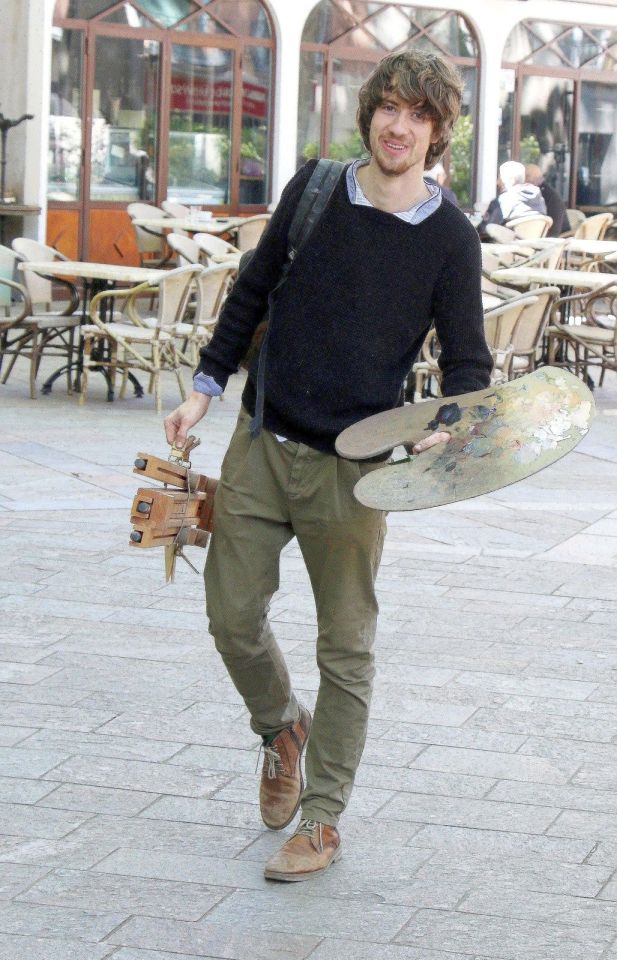
Romer Kitching, Ceret, Occitanie, France
Romer Kitching, English artist, b. 1995, painting at an easel on the balcony of his flat in Ceret, Pyrenees-Orientales, Catalogne du Nord, France. Ceret is the capital of the historical Catalan comarca of Vallespir. Ceret developed under the Kingdom of Majorca, and was fortified with defensive town walls with 2 gates, the Porte de France and the Porte d'Espagne. In the early 20th century, several artists lived and worked here, including Chagall, Dali, Matisse and Picasso.
10 notes
·
View notes
Text
Kings of Mallorca out of the islands
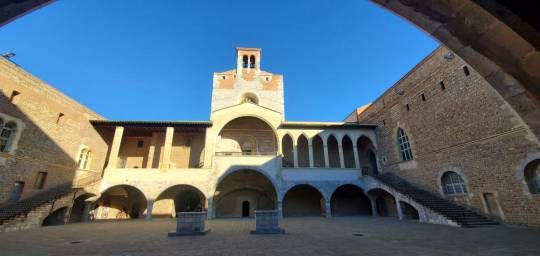
The Palace of the Kings of Mallorca was built by King Jaume II in Perpinyà in 1276, when he assumed the crown of the new kingdom established ten years earlier by Jaume I the Conqueror.
It was the main centre of power for the territories that the new kingdom brought together: the Balearic Islands, the counties of Roussillon and Cerdanya, the lordship of Montpellier, inherited by Jaume I from his mother, Maria, and other fiefs north of the Pyrenees.
Gardens and several chapels were built in the palace, which is protected by powerful walls and a moat. These were consecrated when the complex was completed around 1309, even while King Jaume II of Mallorca, who suffered the temporary loss of his island territories to his uncle, Alfonso III of Aragon, during his reign.
When the islands were recovered around 1291, following the death of the Aragonese king and an arbitration decision by the papacy, James II continued to build the kingdom both in Mallorca and in Roussillon. He was able to enjoy the completed fortress for only two years, as he died in 1311 and was succeeded by his son Sanç.
Sanç I of Mallorca, who became king when his older brother renounced the crown to become a Franciscan friar, continued his father's work and began to build a naval power based on the insularity of most of his kingdom. He clashed with the institutions of the capital of Mallorca.
He died childless in 1324, and was succeeded by his nephew as Jaume III, who immediately assumed vassalage to his relative, King Pere IV of Aragon, whom he supported in the conquest of Sardinia and in the war with the Republic of Genoa.
The Crown of Aragon wanted to annex the kingdom again. Pere IV seized the islands in 1343 and the trans-Pyrenean counties in 1344. Jaume ceded the rest of the baronies to the King of France in exchange for support to recover his kingdom.
The Mallorcan royal dream ended at the Battle of Llucmajor in 1349, certified by the death of Jaume III in the same year. His son claimed the crown of the short-lived kingdom under the name of Jaume IV, but was unsuccessful and his territories were reincorporated into the Crown of Aragon.
After this, the palace of the kings of Mallorca in Perpinyà lost its importance and was only a royal residence when the Catalan-Aragonese monarchs visited their territories in what is now Northern Catalonia.
The wars between the Aragonese and French crowns throughout the 15th century meant that the palace-fortress centralised the defence of the territory. Between 1538 and 1587, Kings Carlos I and Felipe II of Spain enlarged the enclosure with brick walls.
The Treaty of the Pyrenees (1659), by which Spain ceded the former Catalan counties of Rosselló, Cerdanya, Vallespir and Conflent to France, ushered in the French occupation. During the occupation, the military engineer Sébastien Le Prestre, first Lord and then Marquis of Vauban, reinforced the defensive system of what is still today a partially military enclosure.
4 notes
·
View notes
Quote
- Mes, que diràn a Barcelona ? Ara bé. Sem a Barcelona o a Russilló ? El Barcelonès diu : jo parlo ; el Valencia diu : yo parle ; el Mallorqui diu : jo parl : el Russillonès diu : jo parli. Qui te ra-hó ? Jo pensi que tots quatre ne tenen, y que cum n'es d'aixo n'es d'allo. - Y donchs, també cairà escriure Canigu al lloc de Canigó ? Perqué no ? Canigu, qui vol dir : Montanya blanca, [...] y perqué convé an als fills del Monseny de pronunciar Canigó, ai xo vol pas dir que nosaltres, qui sem nascuts y qui vivim en Ia falda o al peu d'aqueixa montanya, siguem obligats de fer com ells. Qui sab millor que'ls fills mateixos del Canigú'l nom del gegant llur pare ?
Estève Caseponse (1850-1932) in the introduction of Contes Vallespirechs (1931) about why he doesn’t write “on the manner of Perpinyá” or “following the rules of Barcelona” when writing his Tales of the Vallespir.
“- But what will be said in Barcelona?
Now, are we in Barcelona or in the Rousillon? A Barcelonese says: jo parlo; a Valencian says: yo parle; a Mallorcan says: jo parl, and a man of the Rousillon says: jo parli. Who is right? I think the four of them are and that here and there things are different.
- So, do we also have to write Canigu instand of Canigó?
Why not? Canigu means: White mountain and just because pronouncing Canigó suits the children of Monseny (mountain near Barcelona), that doesn’t mean that us, who were born and who live in its slope or at its foot have to do the same. Who knows better than the children of the Canigu themselves what is the name of the giant they call Father?”
#llengua catalana#renaixença catalana#esteve caseponse#descriptivism#prescriptivism#regional llenguages#catalunya nord#rousillon#linguistics
3 notes
·
View notes
Text

aeroplanos, andreus (Ginebrosa), avions (de bassa) o avionets), barratgina/barretgina (Sóller/València), borinots, (cavalls de) bruixes, bumberots, burumbots, bombots, pixamines, cabots (Libellula depressa), cabuts, calabruixes, cavalls (de serp/de bruixa/d'aigua/), cavalles, cavall(et)s de Sant Martí, cavallets (del diable/dimoni), cavallets (de séquia/(cua) de serp/d'acer/de mar), cavallets voladors, cevils/civils, cuc de les basses, cucs plovedors, cuques voladores, damisel·les, diablets (Ondara), dianxos (a Gata), dimonis de safareig, dimoseles (Rosselló, Vallespir, Cerdanya) i madimoseles (Rosselló), doctors, dotors de bassa, escanyapits ((Fontpedrosa), escopetes, espantadimonis, espantacriatures, espiadimonis, espietes, esquitxidors, estiracabells, ferrers, fideues, gaiter(o)s, gambosins, gavatxos, gitanos, grandaios, guàrdies civils (Delta de l'Ebre), guitarretes, guitarrons, gulles, helicòpters, iaios (la Sénia), iaios figues (Mas de Barberans, Montsià), joanets, jolibeus/julibeus (a Pedreguer), judios, leonors, llagostins, mares de cavall, marianets, marietes, marotets (femella), marotetes (femella), médicos, micalets, mongetes (La Marina de Pinet), mor-te-i-fuigs/mortefuigs (Almenar), palometes, paraguais, paraigüer(o)s, pardals d'aigua (auia), pardalets d'estiu, parecabots (o parecabotes), pares vicaris, parits, parots (anisòpters: parots = èsnids i parotets = libel·lúlids), parots de bassa, parotets (mascle), passabarrancs (emprat potser a tort, puix que designa, també, els Cordulegaster) pericos, petins, pixatinters, pixavins (a Nules o Castelló), redolins (Delta de l'Ebre), reiets, relicari(o)s, remiqueris, rodabasses, rodadits (rodadit en singular. rodadits de bassa: Gomphus pulchellus, rodadits groc: Gomphus simillimus, rodadits esperonat: Gomphus graslinii), rodalitxos, rodapous, sangradors, sardineros (els Valentins, Montsià), sastres, senyores, senyoretes, serpents, serradits (en singular), tavals, tavans (d'aigua), tavanos, capellans, sangradors, tallanàs o tallanassos (invariable) (Alcanar), tallaorelles, teixidors, tixeires (Sallagosa), torerets (zigòpters), trencaporrons (en singular), treu-ulls, trisparís (Castelló), volantins de fontana, vicaris de bassa, voliaines (Targasona), voltabaixos, voltabasses (Alt Penedès), voltapous, xopaculs... (Wikipedia)
0 notes
Text
Conférence « Insectes, teinture et industrie de l’Ancien Régime au Premier Empire » à Montpellier
See on Scoop.it - Variétés entomologiques
Dans le cadre des « Jeudis de l’histoire », le Domaine départemental de Pierresvives à Montpellier accueillera, le 19 septembre prochain, une conférence unique de l’historien américain Pierre-Étienne Stockland.
Jean-Philippe Vallespir
Publié le 28 août 2024 à 11:02
"... Cet événement gratuit et ouvert à tous se tiendra le jeudi 19 septembre 2024 à 18h30 à l’Atelier de l’histoire du Domaine départemental de Pierresvives, situé au 907 avenue du Professeur-Blayac, Montpellier. Une occasion unique de plonger dans un pan méconnu de l’histoire économique et industrielle de la région, pour avoir le plaisir de découvrir comment un simple insecte a pu influencer la mode et la guerre, de l’Ancien Régime au Premier Empire."
0 notes
Text
J’ai appris ce matin le départ de mon voisin. En sortant de chez moi, j’ai vu la voiture de son propriétaire garée sur le parking du hameau. Et sa porte d’entrée ouverte. Où est il ? Je n’ai pas vu Jean-Paul depuis des semaines… A plusieurs reprises, j’ai voulu aller frapper à sa porte pour savoir si tout allait bien. Je me rassurais finalement en réalisant que je me levais trop tard ces derniers temps pour croiser le retraité. Probablement que nous vivions décalés, à nos âges si éloignés. La dernière fois que j’ai parlé à Jean Paul, c’était une discussion rembobinnée : je sortais de chez moi, j’ouvrais la portière de ma voiture prête à partir au boulot. Il passait devant, s’arrêtait pour fixer la plaque d’immatriculation et disait : “67 ! Oh mais c’est l’Alsace, ça ! Vous êtes alsacienne?” Déboussolée, je me contentais d’affirmer d’une voie enraillée. “Ah ! Moi je viens de Moselle ! Mais ça fait très longtemps que je suis partie. On est bien mieux ici, au soleil.” Et là, mon coeur se serrait. Cette scène s’est produite 2 jours plus tôt, dans le même ordre, au même moment de la journée. C’était un mois après ce soir de Noël où je frappais à sa porte pour lui offrir un verre de Schnaps alsacien et un paquet de chocolats. Un curieux Noël. Les catalans avaient désertés le hameau. Nous étions deux réfugiés de l’Est, auto-suffisants, chacun dans sa maison, à fêter Noël au soleil, l’oeil rivé sur le Canigou. Je m’étais baignée dans la mer, la veille au soir. On ne fait pas ça, là d’où je viens. J’écoutais les souvenirs que me contait Jean-Paul pendant que nous trinquions. Mon voisin me semblait encore très lucide, à cet instant. Mais une chute, puis une autre qui lui valu une épaule cassée, puis la sédentarité qui découlait son poison dans les jambes du vieux loup indépendant, ont fait que tout s’est accéléré. Début des premiers jours de printemps, Jean-Paul traversait le hameau en short, affichant des jambes enflées, striées de varices, et l’épaule en écharpe. Une aide à domicile passait tous les jours. “Eh oui, le corps se détracte.” disait il. A cet instant, je me rassurais de savoir que la tête tenait encore fermement le gouvernail. Et voilà le moment que je ne voulais pas voir venir. En rentrant de ma balade matinale avec ma chienne, je tombe sur François, mon voisin catalan et le propriétaire de la maison de Jean Paul. François voit mon regard inquiet. “Jean Paul déménage, m’explique-t-il. – Déménage? Il va en maison de retraité? – Oui, enfin il rentre chez lui. Sa famille le remonte en Moselle. – Ah. Tant mieux, non? – Ohhh… Ce n’est pas ce qu’il voulait. Mais comme il n’a plus toute sa tête, ce n’est plus lui qui décide. Jean Paul voulait rester en Vallespir. Il aimait se promener au soleil et regarder le Canigou par la fenêtre. C’est tout ce qu’il lui fallait. Mais c’est comme ça. La famille a choisi.” Et nous, voisins, famille du quotidien, nous regardons ça avec tristesse, impuissants. Je réalise à quel point personne n’est libre, tant qu’il est lié sur le papier à d’autres êtres humains. Tout en rédigeant cette dernière phrase, je me rappelle avoir dit à une amie : “Si je ne suis pas encore partie vivre en haut d’une montagne, c’est parce que j’ai une famille et que je ne veux pas m’éloigner encore davantage.” Quelques jours après, je culpabilisais de cette affirmation. N’est-ce pas un peu facile de mettre la faute sur les autres ? D’autres raisons me font rester dans la plaine, comme la flemme ou encore la peur. Mais aussi la famille que j’ai construite ici, faite de toutes les rencontres et amitiés que j’ai tissé depuis mon arrivée dans ce coin du Sud de la France. Et moi ? Est-ce que si je perds la boule, j’aurai envie de rentrer chez moi? Mon ventre se serre à la simple idée de finir ma vie loin des montagnes rocheuses et du bruit des vagues. Ce soir, j’appellerai maman pour lui ...

View On WordPress
0 notes
Text
Les bunyetes de Pasqua, com la magdalena de Marcel Proust
Menjar bunyetes per Pasqua és una segregació de la memòria que durant la resta de l’any dorm entre la cendra. Equivalen més o menys als brunyols empordanesos de les mateixes dates, als crespells del Vallespir, Cadaqués i les Balears, a les orelletes d’altres comarques. Dir-ne crêpes seria un gal.licisme barroer i una equivocació, pel protagonisme aquí de l’oli d’oliva meridional. Les bunyetes són…

View On WordPress
0 notes
Text



Did you know that a Japanese samurai is buried in a village in Northern Catalonia? 🏯 Here's how he ended up in the other side of the world.
Nomura Kosaburo was born in a samurai family in 19th-century Okayama (Japan). His father was a retainer of the Bizen province, serving Lord Ikeda's family. When he was 12 years old, his father died and he inherited his stipends, becoming a samurai himself.
In 1869, he started attending the Army Officers' School “heigaku-ryō” in Osaka (Japan). The school selected 10 of its students to go study in different schools in France. The young Kosaburo was one of the chosen ones, and was sent to the Lycée Louis le Grand in Paris (France). He studied mathematics and received excellent grades, and was scheduled to join a staff officer school, but his plans were cut short when he contracted Tuberculosis.
In 1878, he was advised to go to Southern France, because its dry air was recommended for the treatment of illnesses such as Tuberculosis. He chose the village of Els Banys i Palaldà (Northern Catalonia), a spa town known for its termal water since Ancient Roman times and which had recently built a new military hospital.
Nomura did not survive the illness, he died in 1876. He was buried in the local cemetery, in the tomb you can see in the photos above. The Japanese text means "Tomb of Nomura Kosaburo, Japanese Military Cadet". Below, a text in French says "Here lies Kosaburo Nomura, Japanese military student. Died in Amélie-les-Bains on June 26th 1876 at the age of 21. Perpetual concession." (Amélie-les-Bains is the French name for the village).
His tomb was almost forgotten for 130 years, but now the association Les Amis de Kosaburo - Kosaburo no tomodachi ("Friends of Kosaburo") study his history and preserve his memory in Els Banys i Palaldà and Okayama.
Photos from Vallespir Canigó. Information from Els Banys i Paladà City Council (Mairie Amélie-les-Bains-Palalda-Montalba) and Association Les Amis de Kosaburo.
#història#els banys i palaldà#catalunya nord#japan#japó#other countries#samurai#japanese history#19th century#history#european history#france#french history#travel#europe#asia#okayama#pays catalan#historical
65 notes
·
View notes
Text
Découvrez la biodiversité des Albères et du Vallespir
Au contraire de nombreux territoires, chez nous la forêt gagne du terrain et avec elle des animaux sauvages conquièrent de nouveaux espaces. Des versants jadis pâturés ou cultivés sont aujourd’hui recouverts de forêts et d’essences végétales variées qui abritent de nombreuses espèces dont certaines sont peu ou pas connues. Jean-Pierre Pompidor, spécialiste des grands rapaces et des grands…
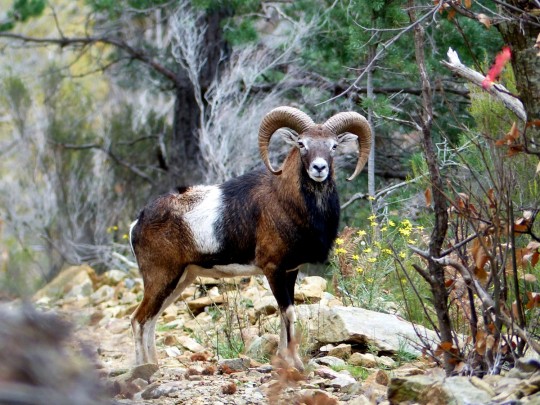
View On WordPress
#2023#Albères#animaux#animaux sauvages#Biodiversité#Costabonne#faune#forêts#guide animalier#Jean-Pierre Pompidor#Journal Catalan#Jujols#Le Journal Catalan#mouflon#photographe animalier#Pyrénées-Orientales#rapaces#reporter#Réserve naturelle#Vallespir#vautour
0 notes
Text

Mapa dels comtats catalans a finals del segle X. Borrell II posseïa els comtats de Barcelona, Girona i Osona (947-993), i també el d'Urgell (948-993). Oliba I era comte de Berga i de Ripoll (998-1002). Oliba Cabreta era el comte de Cerdanya (965-988), amb els pagus de Berga i de Conflent, i comte de Besalú (984-988), amb el pagus de Vallespir. Després d'ell, Guifre II de Cerdanya i Berga fou comte de Cerdanya i Conflent (988-1035) i de Berga (1003-1035). Després d'Oliba Cabreta, a Besalú fou comte son fill, Bernat Tallaferro (988-1020). Al Rosselló foren comtes Gausfred I (931-991) i Guislabert I (991-1014). El Vallespir era vescomtat, part del comtat de Rosselló. N'era vescomte Guillem I (991-1028). A l'Urgell, després de Borrell II de Barcelona, hi governà son fill Ermengol I (993-1010). Al Pallars hi governaren en condomini els germans Ramon III i Borrell I (948-995). A la mort d'aquest darrer foren succeïts per son fill Ermengol I de Pallars (995-1010), que hi governà en condomini amb Sunyer I de Pallars (948-1011), fill de Llop I de Pallars (920-947). A la Ribagorça hi governaven Unifred (970-979), succeït per son germà Arnau (979-990), succeït per son germà Isern (990-1003).
#mapa#cartografia#història#història de Catalunya#història medieval#Història d'Europa#Catalunya#Comtats catalans#Catalunya comtal#segle X#Borrell II#comte de Barcelona#Comtat de Barcelona#Comtat de Girona#Comtat d'Osona#Comtat d'Empúries#Comtat de Besalú#Vescomtat de Vallespir#Comtat del Rosselló#Comtat del Conflent#Comtat de Cerdanya#Comtat d'Urgell#Comtat de Pallars#Comtat de Ribagorça
3 notes
·
View notes
Text
Majorque Paris, Biennale Européenne des Blancs Manteaux 2023
La Biennale Européenne des Blancs Manteaux 2023, organizada por la asociación Les 4 Arts Paris-Centre, tuvo lugar en la emblemática zona de Le Marais de París, con la participación de 40 artistas, 6 de ellos de Mallorca; Sasai, Joan Vallespir, Leticia Maria, Victoria G. Masdeu, Tomeu Coll, Marcos Vidal Y de Espai Sant Marc. Fue un gran evento, amplia muestra de pinturas, esculturas, obra grafica,…
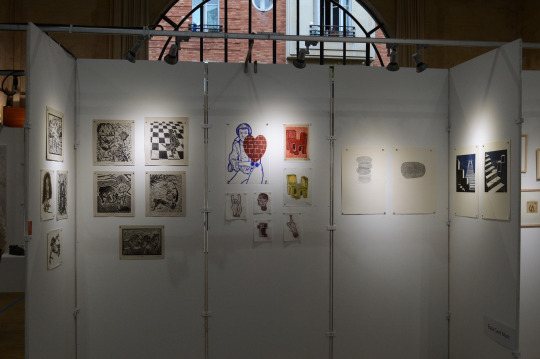
View On WordPress

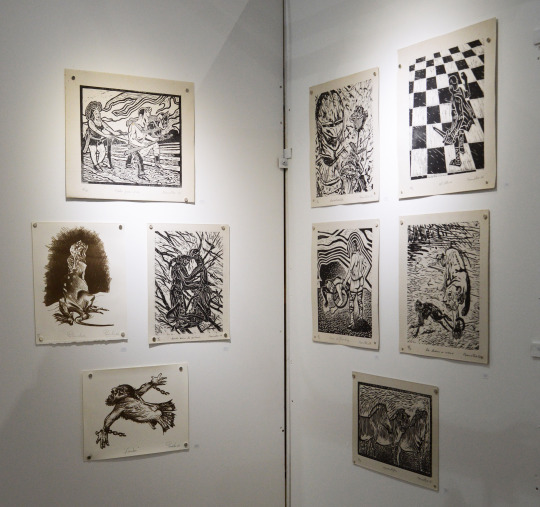
#artbiennale#biennale#contemporaryart#espai sant marc#espaisantmarc#france#mallorca#paris#sant marc air#santmarcair#prometeo#marcosvidalfont
34 notes
·
View notes
Text
Palau dels reis de Mallorca
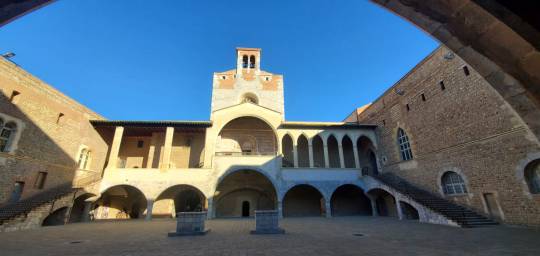
El palau dels reis de Mallorca fou construït pel rei Jaume II a Perpinyà a partir del 1276, quan asssumí la corona del nou regne instituït deu anys abans per Jaume I el Conqueridor.
Es tractava del principal centre de poder dels territoris que el nou regne reunia: les Illes Balears, els comtats del Rosselló i la Cerdanya, el senyoriu de Montpeller, heretat per Jaume I de la seva mare, Maria, i d’altres feus al nord dels Pirineus.
Al palau, que és protegit per poderoses muralles i un fossar, es van bastir jardins i diverses capelles, que foren consagrades en acabar-se el complexe cap al 1309, encara essent rei Jaume II de Mallorca, que va patir durant el seu regnat la pèrdua temporal dels seus territoris insulars a mans del seu oncle, Alfons III d’Aragó.
Recuperades les illes vers el 1291, en morir el rei aragonès i per una decisió arbitral del papat, Jaume II va continuar bastint el regne tant a Mallorca com al Rosselló. Va poder disfrutar del conjunt de la fortalesa acabada apenes dos anys, doncs va morir el 1311 i el va succeïr el seu fill Sanç.
Sanç I de Mallorca, que va ser rei en renunciar el seu germà gran a la corona per fer-se frare franciscà, va continuar la obra del seu pare i va iniciar el bastiment d’un poder naval basat en la insularitat de la major part del seu regne. Va xocar amb les institucions de Ciutat de Mallorca.
Mort sense fills el 1324, el succeí el seu nebot com a Jaume III, que de seguida va assumir el vassallatge respecte al seu parent, el rei Pere IV d’Aragó, al qual va donar suport en la conquesta de Sardenya i en la guerra amb la República de Gènova.
La Corona d’Aragó va voler annexionar-se de nou el regne. Pere IV va fer-se amb les illes el 1343 i amb els comtats transpirinaics el 1344. Jaume va cedir la resta de baronies al rei de França a canvi de suport per recuperar el seu reialme.
El somni reial mallorquí va acabar a la batalla de Llucmajor, el 1349, certificat amb la mort del Jaume III el mateix any. El seu fill va reclamar la corona de l’efímer regne amb el nom de Jaume IV, però no va tenir èxit i els seus territoris es van reincorporar a la Corona d’Aragó.
Després d’això, el palau dels reis de Mallorca de Perpinyà perdé protagonisme i només va ser una residència reial quan els monarques catalanoaragonesos visitaven els seus territoris de l’actual Catalunya Nord.
Les guerres entre les corones aragonesa i francesa al llarg del segle XV va fer que el palau-fortalesa centralitzés la defensa del territori. Entre 1538 y 1587, els reis Carle I i Felip II d’Espanya engrandiren el recinte amb les muralles de maons.
El Tractat dels Pirineus (1659), pel qual Espanya cedí els antics comtats catalans de Rosselló, Cerdanya, Vallespir i Conflent a França, va donar pas a la ocupació francesa. Durant aquesta, l’enginyer militar Sébastien Le Prestre, primer senyor i després marquès de Vauban, va reforçar el sistema defensiu del que encara avui és un recinte parcialment d’ús militar.
1 note
·
View note